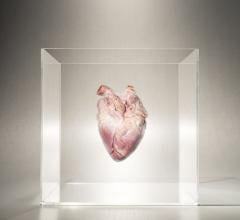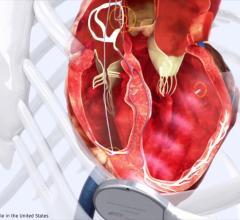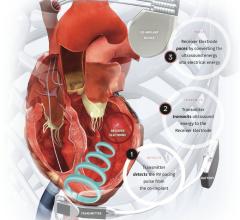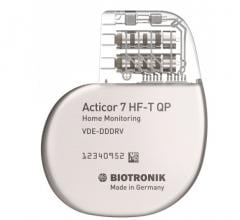St. Jude Medical Inc. says it has received FDA approval of a new cardiac rhythm management device designed to help physicians manage heart failure (HF) patients, including patients who have or may develop atrial fibrillation (AF). The Atlas II HF CRT-D (cardiac resynchronization therapy defibrillator) is the first U.S. heart failure device to offer the AF Suppression proprietary algorithm that helps maintain control of the heart's atrial rhythm by pacing slightly faster than the patient's natural heart rate. The AF Suppression algorithm has been clinically proven to reduce the AF burden (the percentage of days with AF symptoms) in previous studies. "The AF Suppression algorithm provides me with an effective non-pharmacological method for treating my heart failure patients who have AF," said Steven Greenberg, M.D., of the Cardiac Arrhythmia and Pacemaker Center, in Roslyn, N.Y. "With this novel device, I can treat heart failure, while suppressing AF." Atlas II HF CRT-D also offers the company's QuickOpt timing cycle optimization feature, a programmer-based optimization for people with CRT-D devices and traditional ICDs that helps physicians quickly program the device's timing so it delivers optimal therapy to patients. Other features of the Atlas II HF CRT-D are designed to help physicians manage difficult-to-treat conditions: • DeFT Response technology and unsurpassed energy output (36 J delivered energy, 42 J stored energy) help physicians manage the unpredictably high defibrillation thresholds that affect as many as one in eight heart failure patients. • Remote monitoring enables device information to be downloaded and accessed from any computer with Internet access, enabling routine follow-up to be conducted from the convenience of the patient's home.
If you enjoy this content, please share it with a colleague
ACC: St. Jude Receives FDA Clearance for First U.S. CRT Device with A-Fib Feature
Related Content
May 22, 2023 — Findings from two new studies highlight the success of left bundle branch area pacing (LBBAP), or his ...
May 22, 2023 — Results from a pivotal clinical trial found a leadless pacemaker can deliver cardiac resynchronization ...
October 27, 2021 — EBR Systems Inc., developer of the world’s first wireless cardiac pacing system for heart failure ...
August 3, 2021 — In association with Heart Rhythm 2021, Biotronik announced first enrollments in the landmark BIO ...
March 3, 2021 — Medtronic announced new results from the landmark REVERSE trial, evaluating outcomes of cardiac ...
May 13, 2020 — Cardiac resynchronization therapy (CRT) using biventricular pacing (BVP) or His bundle pacing (HBP) is ...
Cardiovascular disease is the leading cause of death for women in North America, and women with heart failure often ...
May 15, 2019 — A pilot trial has shown His pacing in cardiac resynchronization therapy (CRT) has been shown to ...
April 29, 2019 — Biotronik announced the full commercial launch of the Acticor device family, including Acticor DX and ...
April 18, 2019 – Biotronik announced the European market release of what it calls the world’s smallest implantable ...


 May 22, 2023
May 22, 2023 








